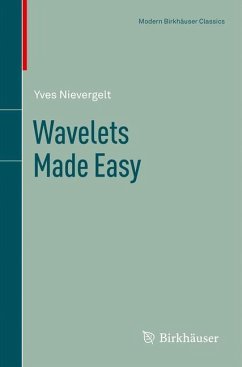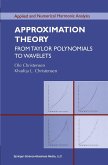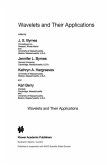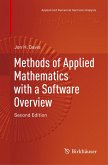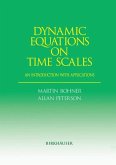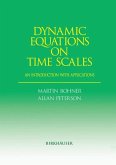Originally published in 1999, Wavelets Made Easy offers a lucid and concise explanation of mathematical wavelets. Written at the level of a first course in calculus and linear algebra, its accessible presentation is designed for undergraduates in a variety of disciplines-computer science, engineering, mathematics, mathematical sciences-as well as for practicing professionals in these areas.
The present softcover reprint retains the corrections from the second printing (2001) and makes this unique text available to a wider audience. The first chapter starts with a description of the key features and applications of wavelets, focusing on Haar's wavelets but using only high-school mathematics. The next two chapters introduce one-, two-, and three-dimensional wavelets, with only the occasional use of matrix algebra.
The second part of this book provides the foundations of least-squares approximation, the discrete Fourier transform, and Fourier series. The third part explains the Fourier transform and then demonstrates how to apply basic Fourier analysis to designing and analyzing mathematical wavelets. Particular attention is paid to Daubechies wavelets.
Numerous exercises, a bibliography, and a comprehensive index combine to make this book an excellent text for the classroom as well as a valuable resource for self-study.
The present softcover reprint retains the corrections from the second printing (2001) and makes this unique text available to a wider audience. The first chapter starts with a description of the key features and applications of wavelets, focusing on Haar's wavelets but using only high-school mathematics. The next two chapters introduce one-, two-, and three-dimensional wavelets, with only the occasional use of matrix algebra.
The second part of this book provides the foundations of least-squares approximation, the discrete Fourier transform, and Fourier series. The third part explains the Fourier transform and then demonstrates how to apply basic Fourier analysis to designing and analyzing mathematical wavelets. Particular attention is paid to Daubechies wavelets.
Numerous exercises, a bibliography, and a comprehensive index combine to make this book an excellent text for the classroom as well as a valuable resource for self-study.
From the reviews:
"This book is very suitable as a text for an upper division class in wavelets. A large number of exercises, including many based on applications, are included ... . This book could also be used as a resource for self-study by the determined student." (Charles Ashbacher, MAA Reviews, February, 2013)
"This book is very suitable as a text for an upper division class in wavelets. A large number of exercises, including many based on applications, are included ... . This book could also be used as a resource for self-study by the determined student." (Charles Ashbacher, MAA Reviews, February, 2013)
The book ¿explains in a nice way the nature and computation of mathematical wavelets, which provide a framework and methods for the analysis and synthesis of signals, images, and other arrays of data. A useful text for engineers, financiers, scientists, and students looking for explanations of wavelets. -Journal of Information and Optimization Sciences Giving practice first and theory later, the author avoids discouraging readers whose main subject is not mathematics. The book is written in a very comprehensible and lively style. The text is essentially self-contained since many of the facts employed from analysis, linear algebra and functional analysis are stated and partially proved in the book. -ZAA
"The book explains in a nice way the nature and computation of mathematical wavelets, which provide a framework and methods for the analysis and synthesis of signals, images, and other arrays of data. A useful text for engineers, financiers, scientists, and students looking for explanation of wavelets."
-Journal of Information and Optimization Sciences
"Giving practice first and theory later, the author avoids discouraging readers whose main subject is not mathematics. The book is written in a very comprehensible and lively style. The text is essentially self-contained since many of the facts employed from analysis, linear algebra and functional analysis are stated and partially proved in the book."
-ZAA
-Journal of Information and Optimization Sciences
"Giving practice first and theory later, the author avoids discouraging readers whose main subject is not mathematics. The book is written in a very comprehensible and lively style. The text is essentially self-contained since many of the facts employed from analysis, linear algebra and functional analysis are stated and partially proved in the book."
-ZAA

